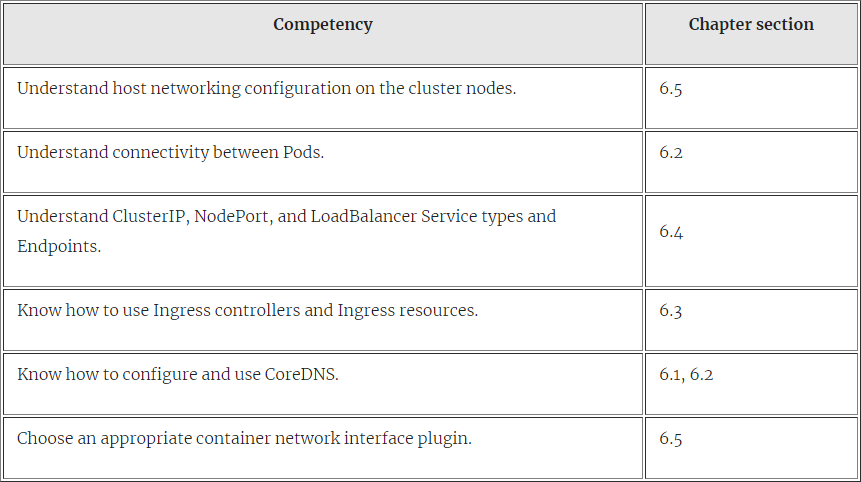chapter six
Many find that networking in Kubernetes is complex, but we will break it down fully in this chapter, especially since it’s 20% of the CKA exam. There are a few important concepts that will clear up a lot of confusion, and because we’ve covered how bridge networking works within containers, I think it will all start to come together. By the end of this chapter, you’ll know how Pods talk to each other within a cluster, which is the essence of the Services and networking section of the exam.
